Recession or not, inflation is wreaking havoc on consumers and businesses. What does that mean for your club?
Everyone wants to know if we are in a recession, or if we had one earlier this year. We definitely had the (what used to be anyway) textbook definition of one in the first half of 2022 because the economy contracted in both the first and second quarters. There are other economic factors, though, that say we didn’t have a recession.
The committee at the National Bureau of Economic Research that most accept as the arbiter of recessions looks at job growth, income and spending data, and manufacturing output in addition to the size of the economy. Each of those data points is holding up well, jobs in particular. The economy added 528,000 jobs in July.
Economies in recession do not usually add jobs, especially at such a healthy clip. However, sometimes jobs are a lagging indicator and other measures of job growth are weaker.
It is also important to keep in mind that we are now deep into the third quarter. Looking back at what the economy was doing six months ago is retrospective and doesn’t change what happened then or is happening now. If we did have a recession back then, we are very likely out of it now. As of this writing, the U.S. Chamber is estimating 2% growth in the third quarter.
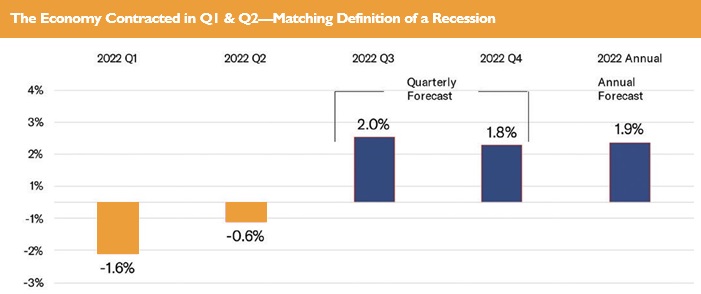
Economic Reality
Ultimately, the technicalities of a recession call take a back seat to the economic reality consumers and businesses are facing every day. High inflation is making their lives difficult and will continue to do so for the foreseeable future. The volatility and instability that come with fluctuating prices makes them feel like the economy is doing poorly, whether or not we’re technically in a recession.
Take, for example, consumer sentiment. As of July, it was near its all-time record low. Consumers feel terrible about the economy because inflation is squeezing their budgets. Despite their incomes
growing more than 5% on an annual basis, their inflation-adjusted (real) income growth is negative because inflation is around 9%. Gas and food prices are up even more than that. It is easy to see why consumers feel sour. Supply chain issues also continue for both consumers and businesses. Consumers cannot always get the products they want and businesses are still struggling for inputs and inventory. The scarcity of things that were abundant not that long ago reinforces bad feelings about the economy. Supply chain issues are also making inflation worse.
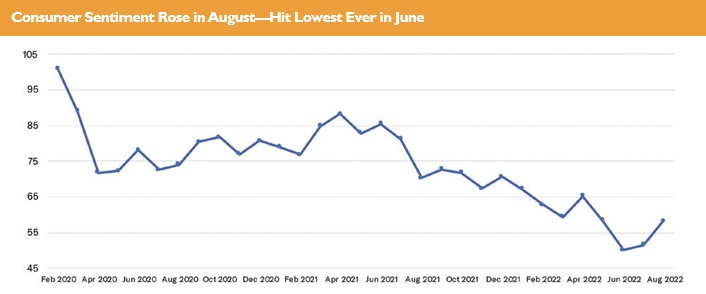
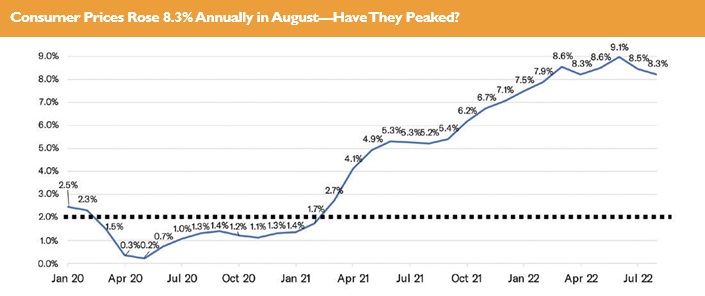
Inflation
Inflation is the major problem for the economy now and will be well into 2024 at least. As of July, it was 8.5% on an annual basis. Food prices were up almost 11% annually and gas prices 44% from a year ago. Inflation is a problem because it squeezes consumers’ budgets, which becomes a problem for businesses because they spend less.
It is also a major problem because of the instability it causes. When businesses don’t know what the prices of their inputs are going to be from day to day, they are hesitant to make decisions.
When workers don’t know what prices will be, they are hesitant to accept wages that may prove too low in a month or so. This uncertainty pervades the economy and slows economic growth.
What Can Be Done
The job of fighting inflation falls mostly to the Federal Reserve through its setting of monetary policy. (Congress and the president share some responsibility through fiscal policy and not making a bad situation worse by increasing spending.) Inflation comes from too many dollars chasing too few goods. From the beginning of COVID-19 in February 2020 until it shifted gears earlier this year, the Fed increased the money supply more than $6 trillion—far greater than the economic growth in that period. Inflation will remain high until the Fed can bring the money supply down.
It will do that by raising interest rates and selling its holdings of Treasury bonds and mortgage-backed securities. It has already raised interest rates four times this year (as of August), bringing the Federal Funds rate from 0% all the way to 2.5%. Many expect additional interest rate increases this year.
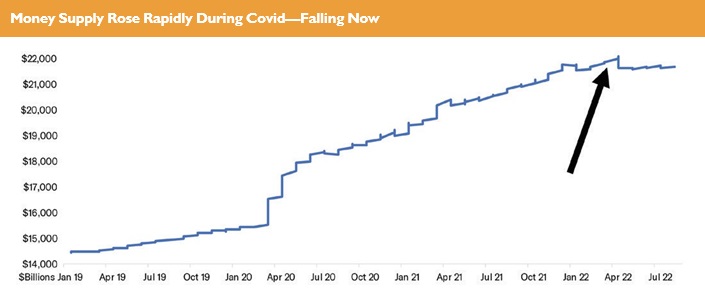
The Effect of Credit
Higher interest rates bring prices down by cooling demand. For consumers, anything they buy on credit will become more expensive as rates rise, which will cause them to cut back. For instance, they will use their credit cards less for smaller everyday expenses they can delay. They will buy fewer bigger-ticket items that often require credit, such as homes and home remodeling, cars, expensive electronics like computers and televisions, appliances like refrigerators, dishwashers, washing machines and dryers, furniture, recreational vehicles, boats and trailers.
The easiest way to see how this lowers prices on the consumer side is the effect of higher interest rates on the housing market. Home buyers usually use mortgages to buy homes. A higher Federal Funds rate will translate into higher mortgage rates. The average 30-year fixed rate mortgage was 3.1% to start the year. It has risen to around 5.5%. That is a huge jump in a short period.
This has caused the scalding hot housing market to cool. All the major housing indicators are down. Prices are sure to follow, but the housing market was so hot that it has room to cool without prices declining. Home prices have been rising 20% on an annual basis for months now. That can come way down without going into negative territory and still have a large impact on lowering inflation.
The same thing that is likely happening in the housing market will happen with other items that require credit. For businesses, investment in plants, equipment, software and other things necessary to make their goods or provide their services will become more expensive. Many such investments will become unprofitable and therefore businesses will not make them. This will cause business investment to decline which will further reduce price pressures.
Borrowing costs for businesses are already rising. The average rate for AAA-rated corporate bond has risen from under 2.8% to start 2022 to over 4% recently.
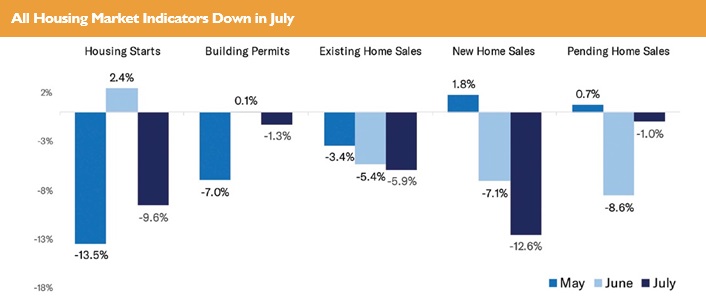

Forecasts
These downward effects on demand and therefore prices will happen over time. There are lags to monetary policy. It will take at least until 2024 before inflation is back near the Fed’s 2% target.
Inflation could come down some before the end of 2022 through the expectations of consumers, businesses, and financial markets.
If these groups expect inflation to slow over the next few years because of the Fed’s actions, they may act in ways that bring prices down now. For example, instead of buying now, they will wait for
expectations remain relatively low and stable, which increases the chances that lower inflation expectations could help to take some pressure out of prices in the coming months.
Continued volatility of energy prices and home price appreciation (because the run up in home prices the last few years has not fully been accounted for in the inflation data) could cut against that effect.
Even if inflation comes down to around 7% before year end, we will still have a way to go before inflation returns to levels we grew accustomed. Inflation is going to be the major economic issue through 2024, which means we are in for bumpy few years. We will have periods of strong growth followed by periods of weak growth as policymakers work to wring inflation out and consumers and businesses adjust to changing prices, higher interest rates, and less available funding.
The stock market will follow those bumps in the road. It won’t likely return to its recent highs until we are fully out of this tumultuous period—but it will get there. Once we are through this bumptious inflation period, the economy is poised for a long period of robust growth.
Curtis Dubay is chief economist at the U.S. Chamber of Commerce. He can be reached at cdubay@uschamber.com.


